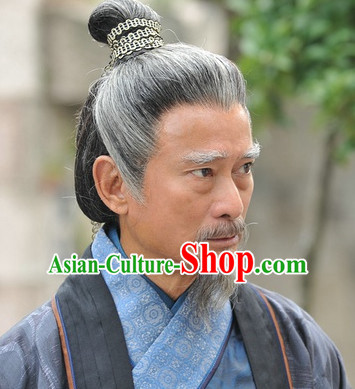Reviving the Elegance of Tradition: An Introduction to the Ancient Chinese Male Hanfu
The ancient Chinese male hanfu is a symbol of the rich cultural heritage of China, reflecting the elegance and sophistication of ancient Chinese attire. Its intricate designs and meaningful patterns not only tell a story of the past but also provide a canvas for modern gentlemen to express their personal style. As we delve into the art of styling this traditional garment, we uncover a world of possibilities that blend history with contemporary fashion.

The Historical Significance of Hanfu
The ancient Chinese male hanfu has a history that dates back to the Zhou Dynasty, evolving through various dynasties with each leaving its unique imprint. As per the cultural insights from Baidu Baike, the hanfu is characterized by its cross-collar, wide sleeves, and a sash that ties around the waist. It is more than a garment; it is a reflection of the philosophy and aesthetics of ancient Chinese society.
Understanding the Structure and Design
Each component of the ancient Chinese male hanfu carries significance. The cross-collar represents the harmony of yin and yang, while the wide sleeves symbolize the breadth of knowledge and wisdom. The sash, often adorned with auspicious patterns, is a nod to the virtue of self-restraint. These elements come together to create a garment that is both comfortable and imbued with cultural depth.

Styling the Hanfu for Modern Wear
Incorporating the ancient Chinese male hanfu into modern attire is an exercise in creativity and cultural appreciation. One can pair the hanfu with contemporary footwear, such as leather boots or loafers, to create a fusion look that is both respectful of tradition and attuned to modern sensibilities. Accessories like a modern watch or a minimalist belt can further enhance the ensemble, adding a touch of personal flair.
Choosing the Right Fabric and Color
The choice of fabric and color for the ancient Chinese male hanfu is essential in achieving the desired aesthetic. Silk, a traditional fabric, exudes a sense of luxury and refinement. As for color, the Chinese culture often associates specific hues with certain meanings—red symbolizes joy and prosperity, while blue signifies wisdom and stability. Selecting the right combination can elevate the overall look and make a statement about one’s personality and values.

Accessorizing with Cultural Respect
When it comes to accessorizing the ancient Chinese male hanfu, it is important to approach the task with cultural sensitivity. Traditional Chinese jewelry, such as jade pendants or intricate hairpins, can complement the hanfu without overpowering its inherent elegance. Remember, the goal is to enhance the garment, not overshadow it.
Conclusion: Embracing the Fusion of Past and Present
The ancient Chinese male hanfu is not merely a relic of the past; it is a living testament to the enduring spirit of Chinese culture. By thoughtfully styling and accessorizing this traditional garment, modern gentlemen can carry forward the legacy of elegance and sophistication that the hanfu embodies. It is a celebration of heritage that transcends time, a fusion of the ancient and the contemporary, and a statement of cultural pride and identity.







